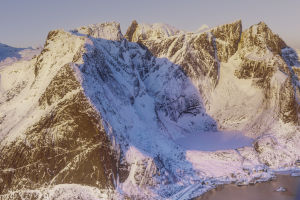The strange high and uneven terrain on Pluto is unlike anything previously observed in the solar system, scientists said, AFP Paris reported March 29.
This means that huge ice volcanoes on the dwarf planet were active in relatively recent times.
This conclusion was reached by analyzing images taken by NASA's New Horizons probe, says a new study published in the journal Nature Communications.
Study author Kelsey Singer, a planetary scientist at the Southwest Research Institute, said ice volcanoes do not eject lava into the air, but flow "a thicker, slush-like ice-water mixture, perhaps even a solid stream, like a glacier.
Singh told AFP that ice volcanoes are thought to exist on some of the colder moons in the solar system, but Pluto's ice volcanoes "look different from anything else we've seen before.
Singh said, "Pluto has a vast region of huge ice volcanoes that have a unique rolling topography."
Singh said it is difficult to tell exactly when these ice volcanoes formed, "but we think they are probably only a few hundred million years old, or even younger."
She added that unlike much of Pluto, the region has no impact craters, which means "you can't rule out that it's still in the process of forming even today.
Lynne Quick, a planetary scientist specializing in ice volcanoes at NASA's Goddard Space Center, said the findings are "extremely important.
She told reporters, "This suggests that a small body like Pluto should have lost most of its internal heat long ago, but it was able to maintain enough energy to drive widespread geological activity in more recent historical times."
She said, "These findings will prompt us to reassess the possibility of maintaining liquid water on small, icy planets far from the Sun."
David Rothery, a professor of planetary earth sciences at the Open University, said, "We don't know what could provide the necessary heat to cause these icy volcanic eruptions."


